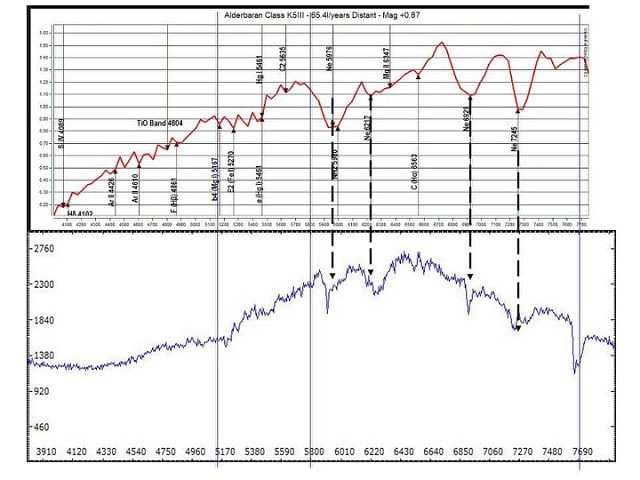
gif by Kronin
Okay not talking about that kind of matrix. But the kind of matrix that is crucial for MALDI (Matrix-Assisted Laser Desorption Ionization). I talked briefly about MALDI in my last article, Imaging Mass Spectrometry: The New(ish) Kid on the Block. Now I want to tell you more about MALDI, specifically the matrix. The choice of which influences what kind of molecules you can detect, so if you are doing MALDI you should know what you are using.
What is a Matrix
If you exposed your fragile sample directly to the powerful laser, the molecules in your sample would be obliterated and rendered useless. The matrix, which is a compound of crystallized molecules, acts like a buffer between your sample and the laser. It also helps ionize the sample, carrying it along the flight tube so it can be detected.
You can apply the matrix to your sample in two ways:
- The dry matrix can be sublimated on to the tissue under vacuum1
- The matrix can be dissolved in a solvent. This is often done with a mixed solution of highly purified water and an organic solvent, such as acetonitrile/trifluoroacetic acid, which is then sprayed onto the tissue
What Maketh a Matrix
When trying to choose a good matrix for your experiment, there are a few “matrix truths” that are universally acknowledged.
- You want a matrix with a fairly low molecular weight, which ensures easy evaporation, but one that is still large enough that it won’t evaporate during sample preparation and will be stable under vacuum.
- Your matrix should have a strong optical absorption in either the ultraviolet or infrared range, in order to rapidly and efficiently absorb the laser irradiation.
- The matrix needs to contain polar groups, which allow them to be used in aqueous solutions.
- The matrix typically contains a chromophore, which is a handy visual aid.
Choosing Your Ideal Matrix
What matrix is right for you and your MALDI-Imaging Mass Spectrometry experiment depends on the type of compounds you’re hoping to analyze in your experiment. Often it takes some trial and error to pick the most suitable one! Most matrices are acidic, and are excellent proton donors, which drive the ionization of your analyte. However, for acid-sensitive samples, there are also some basic matrices that you can use2. There are also other matrices that contain naphthalene-like compounds, which can serve as an electron acceptor.
Here are some commonly-used matrices, which are commercially available from vendors like Sigma-Aldrich, with their applications:
| Matrix | Other Names | Application |
|---|---|---|
1,5-Diaminonapthalene| 1,5-DAN | 1,5-Naphthalenediamine • Used for high spatial resolution lipid imaging |
• Works well for both positive and negative ion modes |
| 3,5-dimethoxy-4-hydroxycinnamic acid | Sinapinic Acid | • Detection of high-weight molecules like proteins that are larger than 5000 daltons • Mostly used in positive ion mode |
| α-cyano-4-hydroxycinnamic acid | CHCA | • Detection of middle-weight molecules such as peptides that are smaller than 5000 daltons • Mostly used in positive ion mode |
| 2,5-dihydroxybenzoic acid | DHB Gentianic Acid | • Detection of lower-weight molecules like peptides, nucleotides, oligonucleotides, and oligosaccharides, that do not ionize well with CHCA or SA • More appropriate for positive-ion mode analysis |
| 9-aminoacridine | 9-AA | • Detection of low-weight molecules such as lipids and metabolites • More appropriate for negative-ion mode analysis |
| Trihydroxyacetophenone | THAP | • Great for the detection of oligonucleotides and phosphorylated peptides |
| 3-hydroxypicolinic acid | HPA | • Oligonucleotide detection |
“This information is based on several publications3-7.
Since each matrix is geared to detect different molecules, you could also combine different matrices during prep to maximize the types of molecules that you detect in your sample8.
However, this list only scratches the surface of what is available. New matrices are constantly being added to the field. It is worth researching what matrix might work for your experiment and talking to experts in the field who have previously used it!
Good luck with your MALDI-imaging mass spectrometry!
References:
- Hankin, J. A., Barkley, R. M., & Murphy, R. C. (2007). Sublimation as a method of matrix application for mass spectrometric imaging. Journal of the American Society for Mass Spectrometry, 18(9), 1646-1652.
- Fitzgerald, M. C., Parr, G. R., & Smith, L. M. (1993). Basic matrixes for the matrix-assisted laser desorption/ionization mass spectrometry of proteins and oligonucleotides. Analytical chemistry, 65(22), 3204-3211.
- Scripps Center for Metabolomics and Mass Spectrometry. Sample Preparation: Common MALDI Matrices. Retrieved from: https://masspec.scripps.edu/services/openaccess/maldim.php
- Zaima, N., Hayasaka, T., Goto-Inoue, N., & Setou, M. (2010). Matrix-assisted laser desorption/ionization imaging mass spectrometry. International journal of molecular sciences, 11(12), 5040-5055.
- Thomas, A., Charbonneau, J. L., Fournaise, E., & Chaurand, P. (2012). Sublimation of new matrix candidates for high spatial resolution imaging mass spectrometry of lipids: enhanced information in both positive and negative polarities after 1, 5-diaminonapthalene deposition. Analytical chemistry, 84(4), 2048-2054.
- Fukuyama, Y. (2011). Liquid Matrices in MALDI-MS. INTECH Open Access Publisher.
- Wu, K. J., Steding, A., & Becker, C. H. (1993). Matrix?assisted laser desorption time?of?flight mass spectrometry of oligonucleotides using 3?hydroxypicolinic acid as an ultraviolet?sensitive matrix. Rapid Communications in Mass Spectrometry, 7(2), 142-146.
- Shanta, S. R., Zhou, L. H., Park, Y. S., Kim, Y. H., Kim, Y., & Kim, K. P. (2011). Binary matrix for MALDI imaging mass spectrometry of phospholipids in both ion modes. Analytical chemistry, 83(4), 1252-1259.






